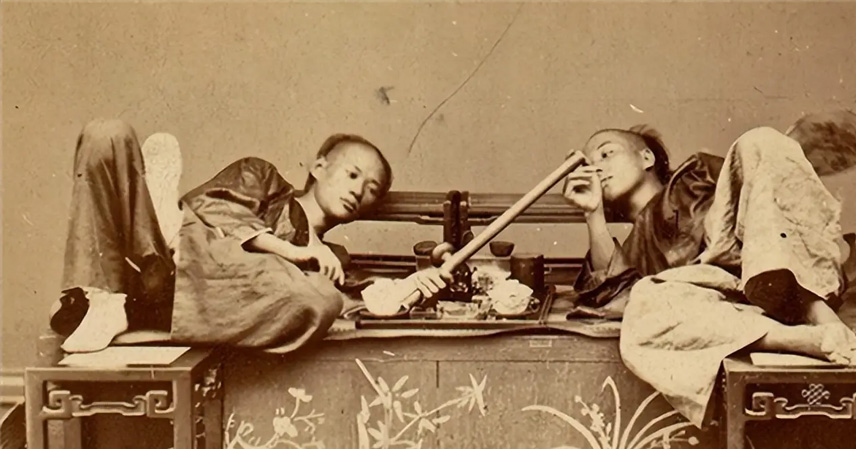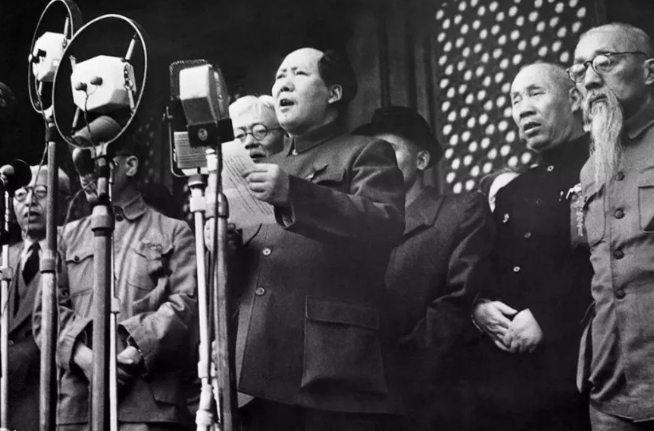The Qing Dynasty was one of China’s most distinctive feudal regimes, positioned at a historical crossroads. Its decline and internal corruption accelerated the nation’s transition toward modernization and the eventual rise of democratic ideals.
In the 19th century, Western powers forcibly opened China to international trade through the Opium Wars, primarily to extract silver and other valuable resources. Previously, China had enjoyed a trade surplus through silk, porcelain, and tea exports to Europe, receiving significant amounts of gold and silver. Yet, as European economies faced crises, Western nations sought new means to balance trade, leading to the widespread importation of opium into China.

The social impact of opium was devastating. By the Daoguang era (1820–1850), opium dens proliferated in major cities like Guangzhou, Shanghai, and Beijing. These establishments bore auspicious names such as “Xianghe” (Harmony) and “Taiping” (Peace), reflecting a cultural normalization of drug consumption. Patrons ranged from high-ranking officials to impoverished citizens, all openly indulging without shame.
Opium was often referred to euphemistically as “Furong Paste” or “Fushou Paste”, believed to provide spiritual and physical satisfaction. In reality, the drug caused severe physical deterioration, addiction, and mental weakening. Men became emaciated, with visible ribs, while women’s vitality and awareness were impaired, making them vulnerable to exploitation.

Dependence was relentless. Even a single day without opium could provoke extreme withdrawal symptoms and insomnia. Scholars, once disciplined, succumbed to lethargy and forgot their scholarly and familial responsibilities. Even emperors such as Wanli and Xianfeng were known to consume opium, with Xianfeng reportedly carrying opium paraphernalia even during military retreats.
The opium trade’s profitability drew many merchants away from traditional agriculture, replacing staple crops with poppy cultivation. This shift contributed to famine and social unrest during the late Qing period, as fertile fields were devoted to opium rather than grain production.
Opium also became a social lubricant, influencing business and politics. Transactions and negotiations often required participation in opium consumption, entrenching the drug’s influence across societal strata. Consequently, the Qing state faced both moral and economic crises, with diminishing revenues as silver flowed abroad to pay for opium.

Recognizing the severity of the situation, reform-minded emperors such as Guangxu initiated anti-opium campaigns. Starting in 1908, nationwide prohibition efforts were enforced, including the closure of opium dens and diplomatic efforts leading to the Hague Convention of 1911, which restricted British opium exports to China. These measures gradually curtailed the domestic opium trade, marking a turning point in China’s struggle against the drug.
However, the long-term social, economic, and political effects of opium persisted. Addiction had weakened communities, eroded moral norms, and depleted the treasury, leaving enduring challenges for Chinese society and shaping the country’s tumultuous path into modernity.
References:
- Fairbank, John K., China: A New History
- Dikötter, Frank, Narcotic Culture: A History of Drugs in China
- Wong, R. Bin, China Transformed: Historical Change and the Limits of Modernization



